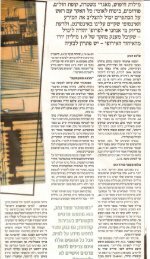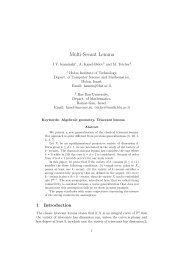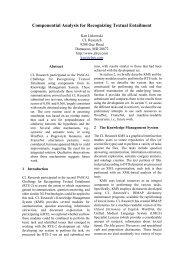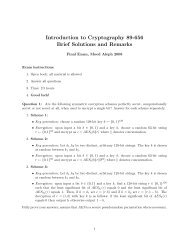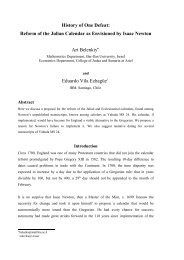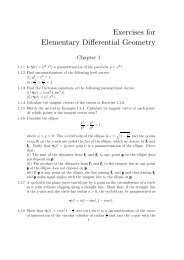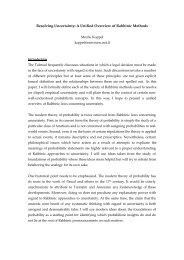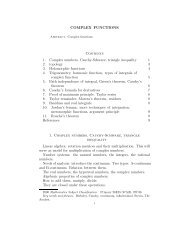The Green Line and the Security Fence:
The Green Line and the Security Fence:
The Green Line and the Security Fence:
You also want an ePaper? Increase the reach of your titles
YUMPU automatically turns print PDFs into web optimized ePapers that Google loves.
6<br />
Ehud Barak in 1999 <strong>and</strong> in 2001 were associated with <strong>the</strong> desire to make concessions to<br />
Palestinians <strong>and</strong> <strong>the</strong>refore with <strong>the</strong> Israeli “Left,” while <strong>the</strong>ir rivals, Binyamin Netanyahu<br />
in 1996 <strong>and</strong> 1999 <strong>and</strong> Ariel Sharon in 2001, opponents of <strong>the</strong> Oslo Accords, were<br />
associated with <strong>the</strong> Israeli “Right.” <strong>The</strong>refore, <strong>the</strong> dependent variable can be treated as<br />
binary, which in turn, allows us to use a traditional, simpler regression model. 8<br />
Looking back, say to 1965 <strong>and</strong> 1969, when “split-ticket voting” was carried out when a<br />
voter chose a party for Knesset <strong>and</strong> local council separately (Arian 1973, 183-6), one can<br />
also discern <strong>the</strong> results we advocate here – but those results went unnoticed. We will<br />
discuss this point later in <strong>the</strong> text.<br />
<strong>The</strong> analysis of <strong>the</strong> Israeli political spectrum that we present in this paper is not unique.<br />
After years of largely descriptive analysis, several authors carried out <strong>the</strong> multilevel<br />
regression analysis. Shamir <strong>and</strong> Arian (1999) performed regression analysis of <strong>the</strong> 1999<br />
elections, using an individual poll of nearly 800 respondents. Debating <strong>the</strong> strong <strong>and</strong><br />
weak aspects of preliminary polls, Shalev <strong>and</strong> Kis (2002) made regression analysis with<br />
aggregate data from <strong>the</strong> Israeli Statistical Bureau, similar to data we used in this paper.<br />
All of <strong>the</strong> above authors avoided treating <strong>the</strong> national (Jewish vs. Israeli Arab) factor<br />
because of some “technical” problems: in one case <strong>the</strong>re were no trustworthy polls<br />
among Israeli Arabs; in ano<strong>the</strong>r, <strong>the</strong>y did not include all o<strong>the</strong>r relevant factors. <strong>The</strong><br />
problems with data <strong>and</strong> <strong>the</strong> way we posed <strong>the</strong> problem (as a “psychological factor” within



